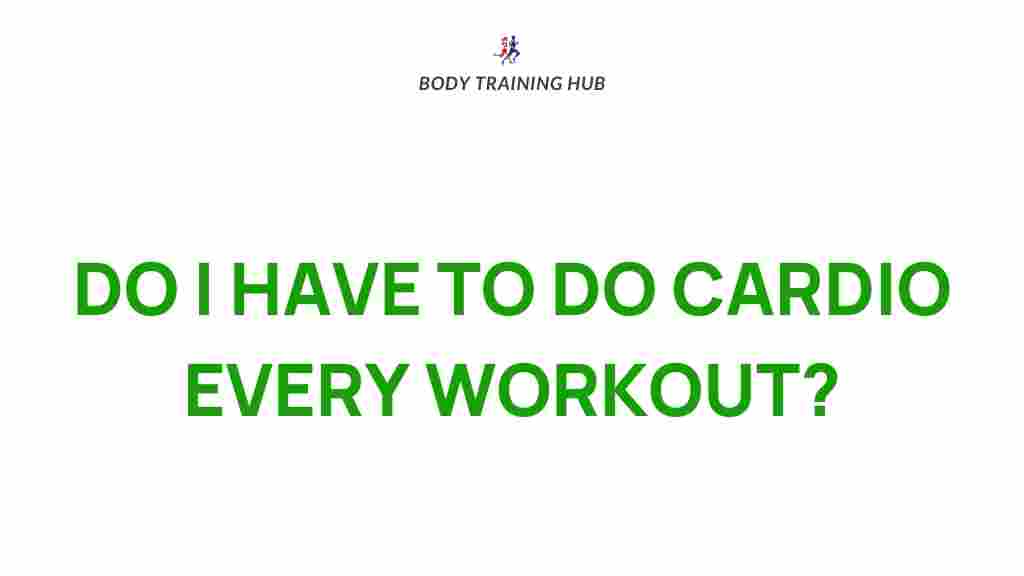Cardio exercises are a cornerstone of many fitness routines, yet their role is often misunderstood. Whether you’re aiming for weight loss, better heart health, or enhanced endurance, understanding cardio is key to achieving your goals. In this article, we’ll explore the significance of cardio and provide actionable insights to optimize your workout routine.
The Role of Cardio in Your Fitness Routine
Cardio, short for cardiovascular exercise, involves any activity that raises your heart rate and improves oxygen circulation in your body. It plays a pivotal role in improving cardiovascular health, burning calories, and supporting mental well-being.
Why is Cardio Important?
Cardio is not just about shedding pounds. Its benefits extend to improving heart and lung health, reducing stress, and enhancing endurance for daily activities. Regular cardio strengthens your heart muscle, enabling it to pump blood more efficiently and reduce the risk of heart diseases.
- Heart health: Reduces blood pressure and lowers cholesterol levels.
- Weight management: Burns calories effectively.
- Mental health: Boosts mood by releasing endorphins.
- Improved stamina: Enhances energy levels and physical endurance.
Types of Cardio Workouts
Choosing the right type of cardio depends on your fitness level and goals. Here are the main categories:
- Low-intensity steady-state (LISS): Ideal for beginners, LISS includes activities like walking or light cycling.
- High-intensity interval training (HIIT): Combines short bursts of intense activity with recovery periods, great for calorie burn.
- Moderate-intensity aerobic exercises: Includes jogging, swimming, or brisk walking.
How to Incorporate Cardio into Your Fitness Routine
Adding cardio to your fitness plan doesn’t mean overhauling your current routine. Follow these steps to ensure balanced and effective workouts:
1. Set Clear Goals
Define what you want to achieve with cardio. Are you aiming for weight loss, better endurance, or overall health improvement? Setting clear goals helps tailor your cardio sessions.
2. Determine the Frequency and Duration
The American Heart Association recommends at least 150 minutes of moderate-intensity aerobic activity per week. Divide this into manageable sessions to stay consistent.
3. Choose Activities You Enjoy
Whether it’s dancing, cycling, or running, selecting enjoyable cardio exercises ensures long-term adherence. Mix activities to avoid monotony.
4. Combine with Strength Training
Pairing cardio with strength training optimizes your overall fitness. For guidance, check out our strength training tips.
Common Mistakes and How to Avoid Them
Cardio is highly beneficial, but there are pitfalls to watch for:
- Overtraining: Too much cardio can lead to burnout or injury. Balance it with rest and recovery days.
- Neglecting strength training: Cardio is essential, but strength exercises are equally important for a well-rounded routine.
- Skipping warm-ups and cool-downs: Always prepare your body with stretches to prevent injuries.
Signs You’re Overdoing Cardio
If you notice these signs, scale back on your cardio intensity or frequency:
- Persistent fatigue
- Plateauing weight loss
- Joint or muscle pain
Tracking Your Cardio Progress
Monitoring your progress helps ensure you’re meeting your fitness goals. Here are some methods:
- Heart rate monitors: Measure your heart rate during workouts to stay in the optimal range.
- Fitness apps: Track steps, calories burned, and workout duration.
- Regular assessments: Test endurance by timing runs or monitoring improvements in recovery time.
Cardio for Different Fitness Levels
Everyone can benefit from cardio, regardless of fitness level:
- Beginners: Start with light activities like walking or cycling for 15–20 minutes daily.
- Intermediate: Incorporate HIIT sessions to challenge your stamina and metabolism.
- Advanced: Mix endurance runs with sprints to push limits and achieve peak fitness.
Combining Nutrition and Cardio
A balanced diet enhances the effectiveness of cardio. Focus on:
- Eating complex carbs for sustained energy during workouts.
- Incorporating lean proteins for muscle repair and recovery.
- Staying hydrated to maintain optimal performance.
Conclusion
Cardio is an indispensable component of any fitness routine, offering benefits that extend beyond weight loss. By understanding its role and implementing it effectively, you can achieve your fitness goals while boosting overall health and well-being.
Remember, balance is key. Combine cardio with strength training, a nutritious diet, and adequate rest to unlock your full fitness potential. Start small, stay consistent, and enjoy the journey to a healthier you.
This article is in the category Cardio & Endurance and created by BodyTraining Team
